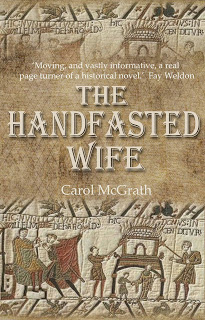Anglo-Saxon women played an important role in the years following The Conquest by providing the opportunity for intermarriage into the landowning class of Saxon society. This intermarriage gave legitimacy that cloaks the conquerors with respectability. Oderic Vitalis writing in the early 1130s speaks of rich English magnates who were Normans already settled in England before 1066 and also those who were Normans from mixed parentage and raised in England. Normans and French men who settled in England before 1066 were regarded as Anglici suggesting that to an extent integration had begun before Conquest.
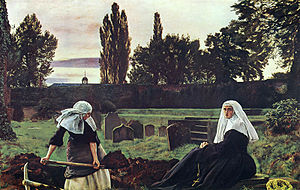
In the immediate post-conquest period there is evidence that William gave confirmation of lands and rights to the Anglici. However, according to The Anglo-Saxon Chronicles, William did not grant such favours for nothing. In fact the loyal English and Anglici bought their lands off the king. Queen Edith, Harold’s sister and Edward the Confessor’s wife, was confirmed in her lands after 1066. Similar provision may have been made for Harold’s mother, Gytha, at least until she refused to pay the king’s tax in Exeter and as a result brought William’s wrath down on her dower town with a siege that lasted for three mid-winter weeks. On the other hand, manors belonging to the male members of the Godwin family e.g. the brothers and family of Harold II were divided amongst royal followers such as William Fitz Osbern (the central shires) and Odo of Bayeux (Kent and the south-east).

An obvious way to secure land was to marry an heiress. The Breton Geoffery de la Guerche apparently acquired the lands of Leofine, Harold’s brother who died at Hastings through marriage with Leofwine’s daughter Aelfgifu. Sometimes the enforced marriage policy was not welcome and the ladies took refuge in nunneries ‘not for love of religious life but from fear of the French’, according to Oderic Vitalis. William also had been concerned to restore land to the English nobility who accepted Norman rule. Just after Hastings penances due from William’s men for destruction were lessened if they married into the enemy. And this penance for Norman knights could be costly.
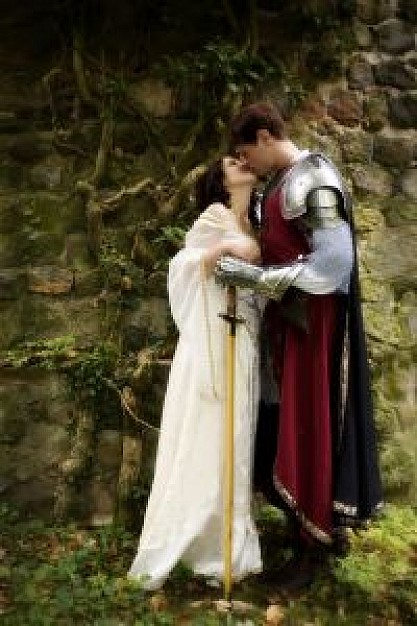
The bulk of male English survivors were royal servants and officials of varying kinds. For example Edward of Salisbury, the sheriff of Wiltshire, an official appointed by Edward the Confessor, survived Conquest and held onto his office. According to The Domesday Book he had an estate of 300 hides in 1086. Widows holding lands in alms were also able to acquire or recover something of the pre-conquest wealth and status. Thus, although the royal court was dominated by foreigners much of local business was in the hands of Englishmen.
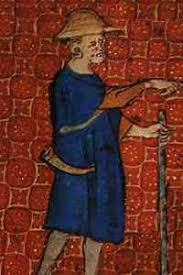
The integration of both peoples after The Conquest did draw on similarities of both peoples and was possible because of similarities as much as the imposition of one set of customs on another such as castle and cathedral building. Oderic Vitalis describes markets of villages and towns as ‘filled with displays of French wares and merchandise’. William of Poitiers speaks of how the women of the English race excelled in embroidery and cloth of gold.
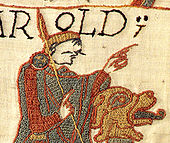
Marriage between incoming Normans and native English families was commoner than surviving sources indicate. There was inter-marriage at all levels of society. One evidence is that women’s names changed less rapidly than men’s names suggesting that newcomers sought English women as wives. Marriage with an English heiress might help secure possession of her family’s lands. William was concerned immediately after the take-over to keep loyal Saxon/English magnates loyal. Though it must be said that the greatest Norman lords still sought their wives from France. It was those who made their fortune in England who found English wives an advantage. Here is an example of a ‘lesser’ heiress’s marriage and how within this family the tradition continued through several generations.
Robert d’Oilly and Ealdgyth, daughter of Wigot of Wallingford
Matilda their daughter married Miles Crispin
Robert d’Oilley II married Edith, daughter of Farne, son of Sigulf and she, interestingly, had a son by Henry I called Robert. It is likely that Henry I, William the Conqueror’s youngest son, married off his Saxon mistress to Robert d’Oilley.
Henry 1, of course, married the greatest English heiress of them all Maud /Matilda of Scotland who was the niece of Edgar Aetheling often regarded as the true and rightful heir to the English throne after Edward the Confessor’s death.
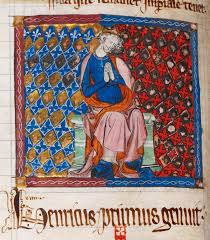
Then, as well, there is the scandal concerning Gunnhild the youngest daughter of King Harold and Edith Swan-neck who eloped with Breton Alan of Richmond, (a cousin of King William) from Wilton Abbey. She is the subject of my new book in progress, The Swan-Daughter.
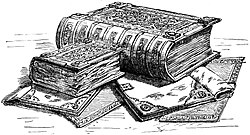
As a consequence inter marriage produced families that spoke English and Norman French. By the end of the 12th century an aristocracy that described itself as English indicates how English became the language of most Anglo-Normans. Sadly though, English wives and mistresses did face a twofold imbalance in power because with the Conquest Norman society gave them less influence than they previously held before 1066. Also, often, the dispossession of male English aristocrats meant that many aristocratic English women who married into the first generation of Normans, French and Bretons, lost what family backing they once had. Equally, they were a factor in the assimilation of two peoples and, by the end of the 12th century, marriage with the Anglo-Saxon heiress contributed to the triumph of an English identity
